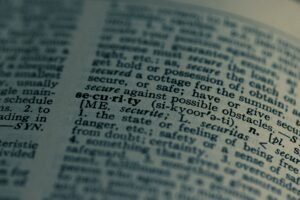Preparing for the IELTS Reading test can feel overwhelming, but understanding the different question types and how to approach them systematically will significantly boost your confidence and score. This in-depth guide covers all seven major IELTS Reading question types, with detailed strategies, common pitfalls, and practical examples to help you improve.
Understanding the IELTS Reading Test Structure
The IELTS Reading test consists of three long passages with increasing difficulty, taken from books, journals, magazines, and newspapers. You’ll have 60 minutes to answer 40 questions across various question types. The texts become progressively more challenging, with Passage 3 being the most complex.
What makes IELTS Reading particularly demanding is that it tests not just your ability to understand English, but your skills in:
-
Quickly locating specific information
-
Understanding main ideas and implied meanings
-
Following detailed arguments
-
Recognizing opinions and attitudes
Now, let’s break down each question type with specific strategies to tackle them effectively.
1. Multiple Choice Questions (MCQ)
Multiple choice questions appear in all sections of the IELTS Reading test. They test your ability to understand detailed information and main ideas in the text.
What It Tests
These questions assess whether you can:
-
Identify specific details in the text
-
Understand paraphrased versions of information
-
Recognize the main idea of a paragraph or section
-
Distinguish between similar-looking options
Strategies for Success
-
Read the question carefully first – Underline keywords that will help you locate the answer in the text.
-
Read all options before looking at the text – This prevents you from settling on the first seemingly correct answer.
-
Think of synonyms – The correct answer will often paraphrase the text rather than use the exact words.
-
Eliminate obviously wrong answers first – This increases your chances if you need to guess.
-
Beware of distractors – Some options contain words directly from the text but don’t actually answer the question.
Common Mistakes to Avoid
-
Spending too much time on one question
-
Choosing an option because it contains words from the text without checking if it actually answers the question
-
Not reading all options before selecting an answer
Practice Example
According to the text, what is the main advantage of the new recycling method?
A) It’s cheaper than traditional methods
B) It can process more materials
C) It requires less energy
D) It produces higher quality materials
To answer correctly, you would need to locate the section discussing advantages of the new method and identify which option matches the text (which might say “the process is more energy-efficient” rather than using the exact words “requires less energy”).
2. True/False/Not Given
This question type tests your ability to identify whether information in the statements agrees with, contradicts, or isn’t mentioned in the text.
What It Tests
-
Your skill in finding specific information
-
Ability to distinguish between what is stated and what isn’t
-
Understanding of precise meanings rather than general ideas
Strategies for Success
-
Understand the definitions:
-
True: The statement agrees with the information in the text
-
False: The statement contradicts the information in the text
-
Not Given: There is no information about this in the text
-
-
Look for qualifying words like “some,” “all,” “often,” etc. These can change the meaning entirely.
-
Be careful with absolute statements containing words like “always,” “never,” “all,” “none” – these are often False if the text uses more qualified language.
-
For Not Given, if you can’t find any information after searching carefully, it’s likely NG rather than False.
Common Mistakes to Avoid
-
Spending too long searching for information that isn’t there (Not Given)
-
Confusing False with Not Given
-
Not recognizing paraphrased information
Practice Example
Statement: All employees must attend the safety training session.
-
True if the text says exactly this
-
False if the text says “some employees” or “most employees” must attend
-
Not Given if employee attendance at training isn’t mentioned at all
3. Yes/No/Not Given (Opinions)
Similar to True/False/Not Given but focuses on the writer’s views rather than facts.
What It Tests
-
Ability to identify the writer’s opinions or claims
-
Understanding of subjective versus objective information
-
Skill in recognizing nuanced viewpoints
Strategies for Success
-
Look for opinion words like “believe,” “claim,” “argue,” “suggest” in the text.
-
Pay attention to qualifiers like “may,” “might,” “could” which indicate opinion rather than fact.
-
Distinguish between the writer’s view and others’ views that might be reported in the text.
-
For Not Given, remember that no opinion on the statement’s topic must appear in the text.
Common Mistakes to Avoid
-
Confusing the writer’s opinion with other people’s opinions mentioned in the text
-
Treating these like factual True/False questions
-
Over-interpreting the text to find an opinion that isn’t clearly stated
Practice Example
Statement: The author believes that technology will solve environmental problems.
-
Yes if the text contains statements like “Technology undoubtedly holds the key to environmental solutions”
-
No if the text says “Technology alone cannot address environmental challenges”
-
Not Given if the text discusses technology and environment but doesn’t state the author’s belief on this connection
4. Matching Headings to Paragraphs
This question type tests your ability to identify the main idea of each paragraph or section.
What It Tests
-
Understanding of paragraph structure
-
Ability to distinguish main ideas from supporting details
-
Skill in recognizing topic sentences
Strategies for Success
-
Read the headings before the text to know what to look for.
-
Focus on the first and last sentences of paragraphs, where main ideas often appear.
-
Look for repeated words/concepts that match the heading.
-
Eliminate headings that clearly don’t match as you go.
-
Don’t get distracted by examples or details – focus on the overall purpose of the paragraph.
Common Mistakes to Avoid
-
Choosing headings based on one detail rather than the main idea
-
Spending too much time on difficult paragraphs – mark possible answers and move on
-
Not using the process of elimination with the headings
Practice Example
Potential headings:
A) Causes of urban expansion
B) Solutions to traffic congestion
C) Historical development of cities
D) Economic impacts of migration
You would need to read each paragraph and determine which heading best captures its main focus, ignoring specific examples or minor details that might seem relevant but don’t represent the primary purpose.
5. Sentence Completion
These questions require you to fill gaps in sentences using words from the text.
What It Tests
-
Ability to locate specific information
-
Understanding of grammatical context
-
Skill in identifying synonyms and paraphrases
Strategies for Success
-
Analyze the grammar of the sentence to predict what kind of word is missing (noun, verb, adjective, etc.).
-
Identify keywords in the sentence to help locate the relevant part of the text.
-
Remember the word limit (usually “NO MORE THAN TWO WORDS”).
-
Use exact words from the text – don’t change the form unless the grammar requires it.
-
Check that your answer makes sense grammatically in the completed sentence.
Common Mistakes to Avoid
-
Exceeding the word limit
-
Changing the form of words from the text unnecessarily
-
Not checking that the completed sentence makes logical sense
-
Missing the relevant information because of not recognizing synonyms
Practice Example
The study showed that ______ of participants improved their scores after training.
You would scan the text for information about study results, looking for percentages or proportions that indicate improvement, and insert the exact words used (e.g., “75%,” “three-quarters”).
6. Matching People to Opinions
This type requires you to match statements to the people who made them.
What It Tests
-
Ability to locate and distinguish different viewpoints
-
Skill in recognizing paraphrased opinions
-
Understanding of attribution in academic texts
Strategies for Success
-
Underline all names when you first skim the text.
-
Look for reporting verbs like “claims,” “argues,” “suggests” near names.
-
Recognize that opinions may be paraphrased rather than quoted directly.
-
Some names may not be used, so don’t waste time looking for matches that don’t exist.
-
Be aware that some people may have multiple opinions assigned to them.
Common Mistakes to Avoid
-
Assuming that because a name is mentioned near certain content, they said it
-
Not noticing when opinions are expressed indirectly
-
Spending too long trying to match every name when some may not be used
Practice Example
Match each researcher to their view:
A) Dr. Smith
B) Prof. Jones
C) Dr. Lee
Options:
-
“The results are inconclusive”
-
“The method has clear applications”
-
“Further research is needed”
You would need to locate each researcher’s comments in the text and match them to these paraphrased statements.
7. Diagram/Flowchart/Table Completion
These questions test your ability to extract and organize factual information.
What It Tests
-
Skill in locating specific data
-
Understanding of how information is categorized
-
Ability to follow descriptive or procedural information
Strategies for Success
-
Study the diagram/table first to understand what information is needed.
-
Predict what kind of word/number is missing in each gap.
-
Follow any numbering or lettering systems that might guide you to the correct part of the text.
-
For diagrams, pay attention to spatial language like “above,” “below,” “to the left.”
-
For processes, look for sequence markers like “first,” “then,” “finally.”
Common Mistakes to Avoid
-
Not reading the instructions about word limits
-
Missing information because it’s presented differently in the text (e.g., written out vs. numerical form)
-
Not checking that answers fit grammatically into the labels
Practice Example
A flowchart showing the stages of product development with blanks for certain stages.
You would scan the text for the description of the process and fill in the missing stages using the exact words from the passage.
General Preparation Tips for IELTS Reading
-
Develop skimming and scanning skills – Practice quickly identifying main ideas and locating specific information.
-
Expand your vocabulary – Focus on academic words and common IELTS topics like education, environment, technology.
-
Practice with authentic materials – Use academic journals, newspaper articles, and official IELTS practice tests.
-
Work on time management – Spend no more than 20 minutes per passage during practice.
-
Analyze your mistakes – After practice tests, understand why you got questions wrong to avoid repeating errors.
-
Read widely – Regular reading of English texts will improve your speed and comprehension.
-
Take full-length practice tests – Simulate real test conditions to build stamina.
Remember that consistent practice with proper techniques is key to improving your IELTS Reading score. Focus on understanding why answers are correct rather than just checking your scores, and you’ll see steady progress in your performance.





